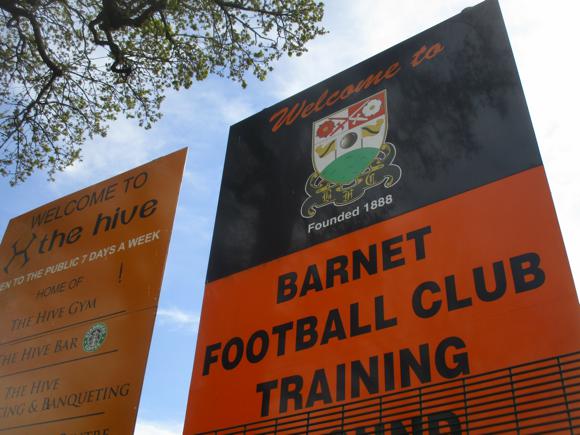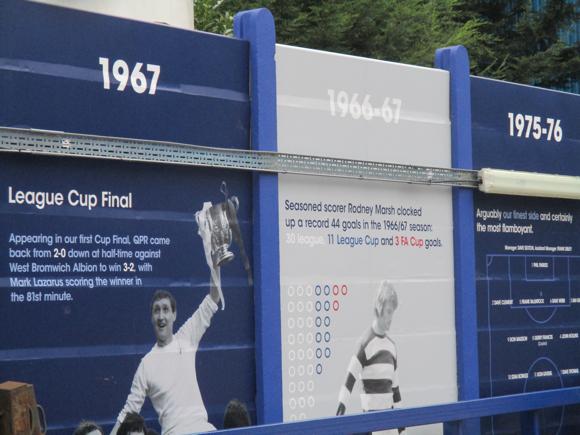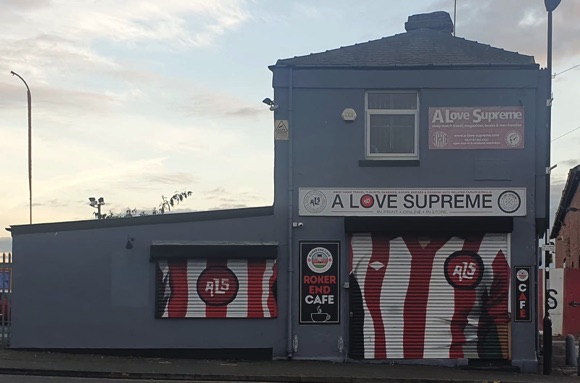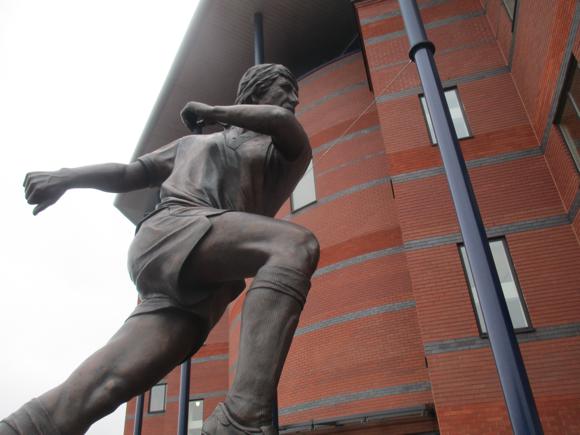A fan’s guide – the club from early doors to today
Achieving an unbroken dozen seasons in the Premier League, Crystal Palace have caused a few surprises since gaining promotion in 2013 while generating a noisy atmosphere at Selhurst Park.
In many ways, the 2023-24 campaign was the most remarkable of all, starting with the inauspicious retirement of Palace old boy and local legend Roy Hodgson, the Eagles in familiar no-man’s-land hovering above the relegation zone.
Luring Austrian Oliver Glasner from the club he had turned into European winners, Eintracht Frankfurt, Palace beat Liverpool, turned over Manchester United and absolutely spanked a Champions League-bound Aston Villa.
In the meantime, four Palace players made England’s Euro 2024 squad, overseen, of course, by a man forged at Selhurst Park, Gareth Southgate.

Few expected Crystal Palace to make a top-ten spot in the Premier League, a feat only previously achieved once in the club’s current sojourn with the elite. Europe, however, is unchartered territory, discounting brief forays in the Anglo-Italian and Intertoto Cups way back when.
Under Patrick Vieira, Palace had already showed promise of higher things, totemic forward Wilfried Zaha passing his 400th appearance for the club. Roy Hodgson then came to the rescue in March 2023 as relegation beckoned, his old-school training drills helping Palace climb back up the table to safety.
Soon afterwards, Palace-raised Zaha ended his 18-year relationship with his local club by heading for Galatasaray, probably already having given his best years to the Eagles. A mural covering a wall of one of the many back-to-back houses surrounding Selhurst Park celebrates the moment when his two goals (‘Zaha… Oh yes!’) turned the vital play-off game at bitter rivals Brighton.
Beyond stretches the Palace fan base, a wide catchment area across the South East, attracting a number of ambitious chairmen whose vision has not always met with success.

Formed by workers at the namesake monument of Crystal Palace in 1905, the Glaziers (later nicknamed the Eagles) first made the upper tier in 1969-70. Known for their frequently changing and garish kits (home and away), Palace famously made the FA Cup semi-final in 1976 under coach Malcolm Allison, but the fedora-toting, champagne-glugging svengali somehow managed to gain popularity while taking the club down two divisions. His successor, Terry Venables, took Palace up to the top flight, via two high-drama promotion-clinching matches.
But it was under controversial chairman Ron Noades and intelligent coach Steve Coppell that Palace made a real impression in the top flight, finishing third, and taking the 1990 FA Cup Final to a replay.
Top goalscorer Ian Wright headed for Arsenal, leaving Palace to yo-yo between the top two divisions as Coppell returned for a total of four stints as manager. Young mogul Simon Jordan, born by the ground, took over as the league’s youngest chairman but the forced sales of key players hardly helped the club’s cause as bankruptcy beckoned. After decades of conjecture, a long-term campaign by Palace fans saw the consortium CPFC 2010 buy the stadium from the bank.

Palace had last enjoyed a short stay in the Premier League in 2004-05 when Ian Holloway took over as manager in 2012. Hiring 39-year-old goalpoacher Kevin Phillips as a game-changing substitute, Holloway led Palace to the play-offs. Overcoming two high-tension games against rivals Brighton, Palace pipped Watford at Wembley, the only goal inevitably coming from substitute Phillips.
Out of his depth in the Premier League, Holloway quickly gave way to Tony Pulis, whose astute signings steered Palace from danger. Strangely, Pulis resigned on the eve of the 2014-15 campaign, but another rescue job, this time by Alan Pardew, saw Palace finish a creditable tenth.
An unexpected run to Wembley under Pardew in 2016 saw a repeat of the FA Cup final of 1990 when the manager played for the Eagles. With quality players such as French international Yohan Cabaye and England (and Ivorian) cap Wilfried Zaha, Palace gave a decent showing against Manchester United.
As in 1990, the game went to extra-time, but ten-man United ruined another Wembley occasion for Pardew when Jesse Lingard scored with ten minutes to go.



Pardew duly gave way to later disgraced Sam Allardyce, who spent big to survive. Frank de Boer then lasted four games before former England boss Roy Hodgson stepped in.
Saved so often by Zaha, Serbian international Luka Milivojević and Belgian international Christian Benteke, Palace continued to tread water while maintaining a long tradition of experimenting with kit colours.
After Hodgson’s emotional farewell to the club where he played as a boy, Patrick Vieira added a little spark to Palace’s play, but it wasn’t to last, and the situation called for Croydon boy Hodgson to return. Without Zaha or Milivojević, the Eagles were always going to struggle but the situation allowed South Londoner Eberechi Eze to shine – and add to his growing collection of England caps.
More than earning his retirement, Hodgson made way for Oliver Glasner to push Palace up the table, with the promise of a similar direction of travel in 2024-25.



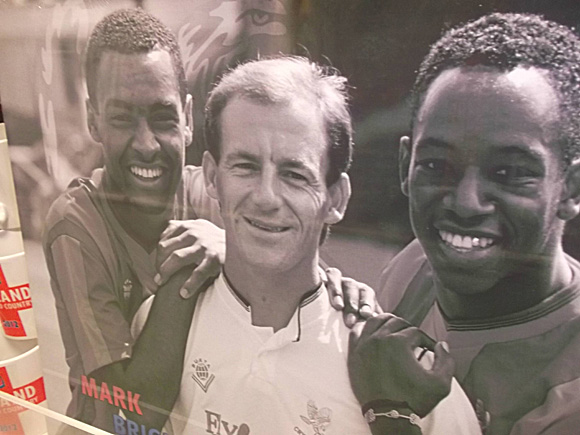
Ground Guide
The field of dreams – and the story behind it



Set between the surrounding three rail stations of Selhurst, Norwood Junction and Thornton Heath, Selhurst Park was one of 40 football grounds designed by Scottish architect Archibald Leitch before the war.
It still feels how football used to be – which is exactly why it was chosen as the filming location for the Apple TV series Ted Lasso about a motivational American soccer coach dropped into a grey, staid old England.
Opened in 1924, Selhurst Park was only developed 45 years later when then chairman (and builder) Arthur Wait erected the stand that now bears his name. Half of the Whitehorse Lane terrace was then sold to Sainsbury’s, whose supermarket occupies the corner of the stadium complex where you’ll also find the shop and ticket office.



Today’s pre-match razzamatazz and the raucous, ultras-influenced, big-banner support at the home Holmesdale Road end have made Selhurst Park a unique environment for its size – 26,000 capacity – in the Premier League.
Nearly all visitors come away with a positive impression but it doesn’t hide the fact that certain areas of the ground need an overhaul. Both the Arthur Wait Stand, where away fans are allocated the nearest sections to the Croydon Advertiser/Whitehorse Lane end, and main stand opposite feel dated. The latter witnessed Sweden’s 12-0 demolition of South Korea at the 1948 Olympic football tournament, the famed Gre-no-li trio grabbing seven goals shortly before their move to Milan.
Whenever redevelopment is mentioned, the main stand is always top of the list. In the meantime, cheerleaders and ultras make for a special atmosphere, at least while Palace remain in the Premier League.
getting here
Going to the ground – tips and timings



Selhurst Park is served by three mainline rail stations, each ten or 15 minutes’ walk – don’t use Crystal Palace station, a good 2km away. Norwood Junction is 10-20mins from London Bridge, Thornton Heath and Selhurst about 22-25mins from Victoria. Norwood Junction is also on the London Overground line from Highbury & Islington via Docklands.
Each station is in zone 4. Norwood Junction has the most bars around it – heading up from the station, turn right at the clock tower for the bars, left for the stadium, turning right at Park Lane. From Thornton Heath, veer left on Brigstock Road, head right at the crossroads to High Street, and walk straight on as it becomes Whitehorse Lane. Selhurst is the furthest away but leads to Palace pub, the Clifton Arms: turn left out of the station into Selhurst Road until you get to Clifton Road, then turn left. A quick detour in the opposite direction out of the station will lead to the equally partisan White Horse.
The sat nav code for Selhurst Park is SE25 6PU. There is no parking at the stadium nor in the streets immediately around, with resident-only parking on match days. Croydon Council provides details of the limited pay-and-display parking spaces around Norwood and Thornton Heath, such as Belgrave Road near Norwood Junction station.
getting in
Buying tickets – when, where, how and how much

Only members can purchase tickets for individual matches. The club offers various types of membership packages, including an international one (£45) with modest discounts on hotel stays and souvenirs. Basic Silver Membership is £25, Gold (£55) offers 24-hour priority on ticket sales ahead of season-ticket holders and other members.
The main ticket office (Mon-Fri 8.30am-5pm, Sat 9.30am-12.30pm, match-day Sat 9am-kick off & 30min after full-time, eve game 9am-kick-off & 30min after full-time) is inside the club shop on the Sainsbury’s corner on Whitehorse Lane. Members can also buy over the phone (UK only 0871 200 0071) and online.
The club is also a member of the fan-to-fan ticket resale platform Twickets. There are also match-day hospitality options at £250-£350 plus VAT, including food, drinks and VIP seats.
Matches are categorised A and B, with prices set at £40-£45 and £30-£35. Seniors and students pay £26-£30 and £18-£24, under-18s £20-£22.50 and £16-£17.50. Admission is cheaper in the family-designated Croydon Advertiser/Whitehorse Lane Stand, £25-£35, discounts £17-£24, under-18s £12.50-£17.50.
For Premier League games, away fans pay £30, discounted admission £20.
what to buy
Shirts, kits, merchandise and gifts




On the Sainsbury’s corner where Whitehorse Lane meets Centenary Way, the club shop (Mon-Sat 9am-5.30pm, match-day Sat 9am-kick off & 1hr after full-time, eve game 9am-kick off & 30min after full-time) offers the standard range of merchandise.
For a club once renowned for its out-there kit designs, Crystal Palace have ditched stripes for 2023-24 and gone for half-and-half red and blue. The smart away choice of white with a light-blue sash harks back to the club’s first ever shirts from the early 1860s. Third kit is black with grey splotches, and red-and-blue collar and cuffs.
Crystal Palace also organise live online auctions of signed shirts, the proceeds going to a charitable foundation.
Where to Drink
Pre-match beers for fans and casual visitors





Around Norwood Junction, right by the station, The Cherry Tree is alway popular with Palace fans while turning right at the clock, The Albion is the self-proclaimed ‘Home of the Eagles’, with a few replica scarves and Palace regulars around the bar. In between, the Shelverdine Goathouse, opened in 2016, is a notch above, with decent food and beers, and a less partisan atmosphere on match days. Its name links back to the pre-railway days.
For a straightforward, visitor-friendly venue, the traditional-as-it-gets Prince George offers live sport on three large screens. It’s a five-minute walk from Thornton Heath station, at the corner of Brigstock Road, Woodville Road and High Street.





Near Selhurst station, The Holmesdale has always been a Palace favourite but incoming Irish management now provides a more inclusive, community approach. There’s plenty of TV sport, a children’s play area in the back garden and, above all, proof that you needn’t cover a pub in red and blue for it to be Palace-focused – the clue is in the name.
In the vicinity, just off Whitehorse Road that leads to the stadium, the Pawsons Arms features an eagle on its pub sign, a giveaway clue as to where its heart lies, though the friendly landlord should give a warm welcome to all. Live sport shown, honest pints pulled.
The nearest boozer to the ground is The Clifton Arms, with tables outside and Palace souvenirs within, on the corner of Clifton and Holmesdale Roads. At the stadium, Palace fans in the Main Stand gain access to the Glaziers Lounge, while faithful followers in the Holmesdale Road end head for the Tap Room, showcasing local craft beer Cronx, hipster nickname for the area. There’s wine, too, the club’s own-label Eagle Red, Eagle White and Eagle Rosé. How times change.





